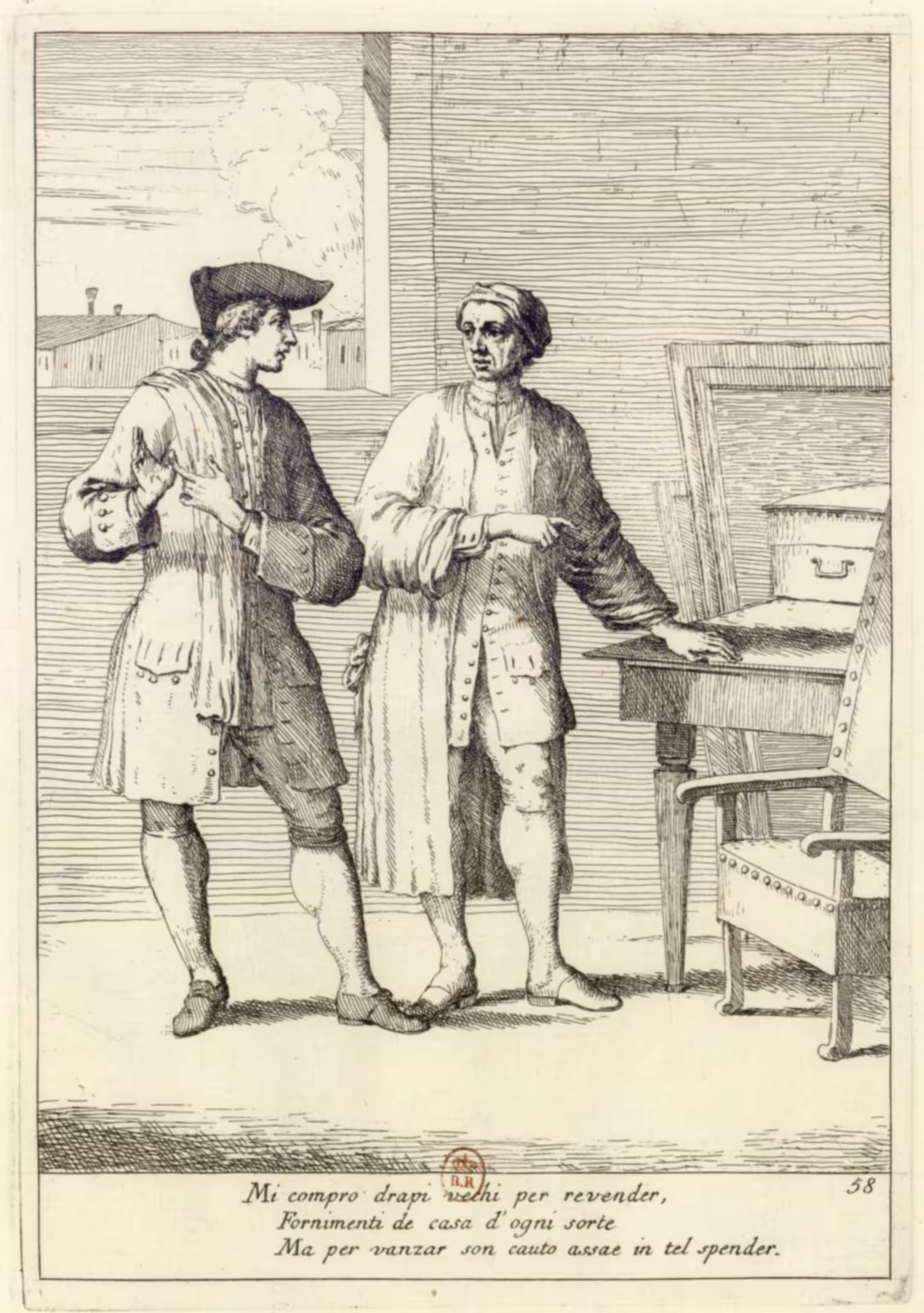Venice
-
Fiorer — street vendor of fresh flowers — Zompini — Arti #56
“Fiorer” (street vendor of fresh flowers) from “Arti che vanno per via” (1785) by Getano Zompini, translated by René Seindal.
-
Predatori Predati — Prayed upon Predators — Grevembroch 4–86
“Predatori Predati” (Prayed Predators) from the Gli abiti de veneziani (1754) by Giovanni Grevembroch, translated by René Seindal.
-
Strazzariol — merchant of used clothes and household items — Zompini — Arti #58
“Strazzariol” (merchant of used clothes and household items) from “Arti che vanno per via” (1785) by Gaetano Zompini, translated by René Seindal.
-
Ruffiana — Ruffian — Grevembroch 3–161
“Ruffiana” (Ruffian) from the Gli abiti de veneziani (1754) by Giovanni Grevembroch, translated by René Seindal.
-
Prostitute al Bordello — Prostitutes in the Brothel — Grevembroch 3–160
“Prostitute al Bordello” (Prostitutes in the Brothel) from the Gli abiti de veneziani (1754) by Giovanni Grevembroch, translated by René Seindal.
-
Puttana — Whore — Grevembroch 3–159
“Puttana” (Whore) from the Gli abiti de veneziani (1754) by Giovanni Grevembroch, translated by René Seindal.
-
Meretrice — Prostitute — Grevembroch 3–158
“Meretrice” (Prostitute) from the Gli abiti de veneziani (1754) by Giovanni Grevembroch, translated by René Seindal.
-
Sartore Ducale — Tailor of the Doge — Grevembroch 4–102
“Sartore Ducale” (Tailor of the Doge) from the Gli abiti de veneziani (1754) by Giovanni Grevembroch, translated by René Seindal.
-
Cortigiane — Courtesans — Grevembroch 3–157
“Cortigiane” (Courtesans) from the Gli abiti de veneziani (1754) by Giovanni Grevembroch, translated by René Seindal.
-
Glossary — clothing
Clothing has its own vocabulary, which often makes reading and translating old texts challenging for the uninitiated.









